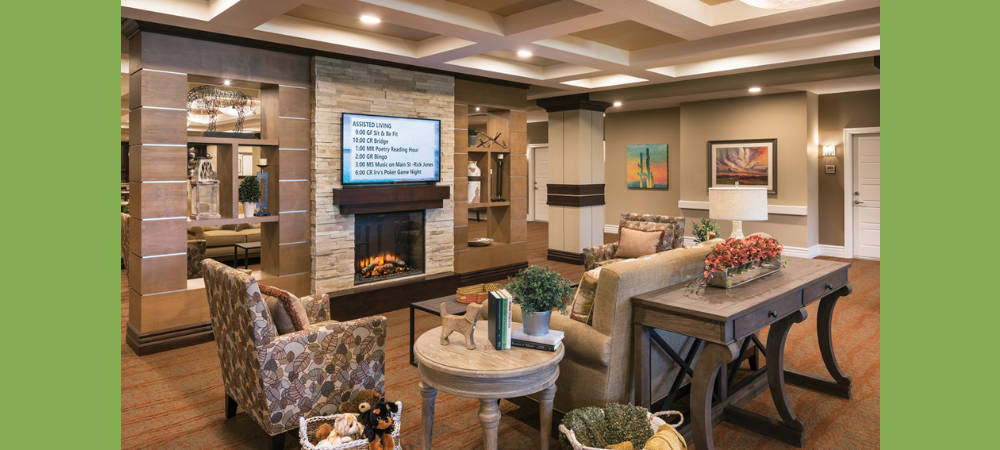A Caregiver’s Guide to Navigating Wandering in Older Adults

For countless caregivers, the journey of supporting an aging loved one brings both immense rewards and significant challenges. One of the challenges many face is wandering in older adults. This behavior, though frequently unpredictable and distressing, can be a big and unexpected aspect of caregiving. Understanding the complexities is essential, and can be manageable. Continue reading for essential insights and tools to help ease caregivers into an area where informed and effective care can be consistently provided.
About Wandering in Older Adults
Wandering in older adults is a phrase that often sends shivers down the spine of caregivers, conjuring images of frantic searches and dangerous situations. For many families supporting seniors, particularly those living with dementia or other cognitive impairments, wandering in older adults is a very real and often distressing reality. While it presents significant challenges, gaining a deeper understanding of why this occurs and implementing thoughtful, proactive strategies can vastly improve the safety and well-being of the loved one and bring a measure of peace to the caregiving journey.
When discussing seniors that wander, it’s not simply aimless strolling. It’s a spectrum of behaviors, each with its own challenges and reasons why. Sometimes, it manifests as pacing, involving repetitive walking back and forth within a confined space, like a living room or hallway. This can be a sign of restlessness, anxiety, or an unmet need. Another form is purposeful wandering, which is perhaps the most heartbreaking.
An individual often appears to be on a mission. They might be “going to work,” “picking up the kids,” or most commonly, “going home”—even when they are already in their residence. These actions are driven by a perceived purpose, however illogical it may seem. The most dangerous form of wandering in older adults is elopement, where an individual leaves a safe, supervised environment unsupervised. This can quickly lead to disorientation, exposure to hazards like traffic or harsh weather, and the inability to find their way back. Finally, there’s nighttime wandering, often associated with “sundowning syndrome,” which occurs as daylight fades. Individuals may become more confused, agitated, or restless, leading them to get out of bed and wander through the house during the night, increasing the risk of falls or injury.
Why Our Loved Ones Wander
Wandering in older adults is rarely something a loved one does on purpose. It’s typically a reaction to a person’s changed perception of reality, often triggered by internal feelings and external surroundings. The first step in understanding why this is happening is to understand the underlying reasons behind this behavior.
The brain’s role in cognitive impairment is by far the most significant factor. Diseases like Alzheimer’s, Lewy body dementia, and even stroke-related brain damage can impair judgment, memory, and spatial awareness. The brain struggles to interpret surroundings, leading to a desperate desire to find something familiar or to escape an unfamiliar, perceived threat. Their mind may be stuck in an earlier time or place, compelling them to “go home” to a house they lived in decades ago, or to seek out family members who are no longer present.
Other Causes for Wandering
Sometimes, it could be a simple unmet need that can trigger wandering in older adults. These discomforts of hunger, pain or other unmet needs can make them restless and propel them to search for relief. Emotional distress such as anxiety, boredom, or agitation also plays a significant role. The feeling of constantly being confused, unable to communicate needs, or stripped of usual routines can lead to anxiety or agitation. This can be a way to express these feelings or to seek stimulation they are no longer able to initiate on their own.
Another common reason relates to following old routines. Many seniors lived highly structured lives. A desire to “go to work,” or “go shopping” might be an ingrained habit that their brain is still trying to fulfill, despite the current reality. These ingrained behaviors can fuel wandering in older adults. Environmental triggers like an unfamiliar environment, excessive noise, or a cluttered space can heighten confusion and increase the likelihood of wandering.
Ensuring Safety and Well-being for Wandering Older Adults
Managing wandering in older adults requires a compassionate, multi-faceted approach that prioritizes safety while addressing the underlying needs.
Secure the Environment
Securing the environment is paramount. Install locks that are high up and out of typical sightline on all exterior doors and windows. Consider adding alarms that chime when a door or window is opened. Another safety measure is to remove any hazards. Walk through the home with fresh eyes, locking away all dangerous items: cleaning supplies, tools, medications, fall risks and more. Ensure pathways are clear of clutter and remove any rugs to prevent falls. Ensure the loved one wears an ID bracelet with their name, address, and an emergency contact number. Consider discreet GPS tracking devices such as smart watches or shoe inserts. Finally, inform trusted neighbors about the loved one’s tendency to wander. Provide contact information and register them with local police if they offer a program that helps individuals with cognitive decline. This can expedite search efforts if wandering leads to them going missing.
Understand Wandering Triggers
The next step is understanding and addressing triggers for wandering in older adults. Become a detective and keep a “wandering log.” Note the time, duration, and any preceding events or potential triggers. This can help identify patterns in wandering. Establishing a routine and stimulation can help immensely to prevent any wandering events. A predictable daily schedule can provide comfort and reduce anxiety for the individual. Incorporate meaningful activities that align with their past interests and current abilities. Simple tasks like folding laundry, watering plants, or looking at photo albums can provide purpose and reduce restlessness. Meeting the individual’s needs first and promptly can help prevent wandering. Regularly offer food, drinks, and opportunities to use the restroom, as well as check for any signs of pain, or discomfort. Sometimes, just a snack or a warm drink can stop wandering in older adults in its tracks.
Communication & Redirection
Another tactic in preventing wandering in older adults is effective communication and redirection. If the loved one is wandering, approach them calmly and gently. Avoid confrontation or arguing, which can escalate agitation. Instead, gently redirect them by saying, “Let’s go have a snack,” or “Would you like to look at this book with me?” If they insist on “going home,” validate their feelings, then redirect: “It sounds like there’s a strong desire to go home. Tell me about that home. What did they like to do there?” If the individual pushed on, never block an exit forcefully, as this can lead to fear, aggression, possible injury and a stronger determination to escape.
Professional Guidance
Finally, professional guidance can be best to offer tips for wandering in older adults. Always consult a physician about new or increased wandering if they are established with one, or work to get them into a doctor’s office for additional assistance. They can rule out underlying medical issues that may cause these cognitive changes, like UTIs, review medications for side effects, and offer tailored advice. Preventing caregiver burnout is another big part of caring for seniors with cognitive decline. Connecting with caregiver support groups can provide emotional support, practical tips, and a sense of community when dealing with wandering in older adults, so that you are not going through this alone.
Memory Care Living at Robson Reserve at Sun Lakes
Caring for an older adult experiencing wandering is one of the hardest parts of aging, but it can also be a journey where support and specialized care can make a profound difference for you and your loved one. By understanding the causes of these cognitive changes, implementing safety measures, and employing compassionate redirection, there can be significant reductions in risks and alleviation of distress can be achieved. For those in the Sun Lakes area seeking dedicated support for their loved one, Robson Reserve at Sun Lakes offers secure, specialized memory care designed to provide a calm, engaging, and nurturing environment for individuals with cognitive decline. The specialized activities calendar designed for whole-person wellness, a dining program to fit the needs of each resident, and dedicated team members who get to know each resident individually can offer a valuable resource, ensuring peace of mind for families and dignified care for residents. Contact us today to learn more about our memory care services for wandering in older adults and schedule your personal tour.




